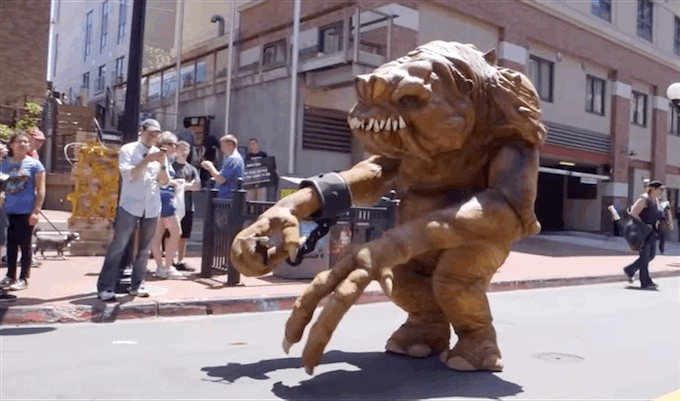
Comic Con is full of Vaders, Boba Fetts, and Storm Troopers. But how many people can say they’ve roamed the show in an ultra detailed, kind-of-terrifying Rancor costume?
Just one — special effects artist Frank Ippolito.
Built in just a month by Ippolito and a team of artists along with our friends over at Tested, the costume is about as intense as they get.
My favorite trick of the whole project: as you may note, the Rancor’s eyes don’t happen to fall in a place that offers the wearer much of a view to the outside world. So how do they keep him from running into walls and stepping on small children? There’s a camera hidden in one of the nostrils; inside the costume, he’s wearing a pair of goggles that beams that camera feed to his eyes.
(If you just want to see what the costume looks like all together and in motion, skip to 4:30 or so. The first few minutes are a making of — which, don’t get me wrong, is pretty great in its own right.)
Comments
Post a Comment